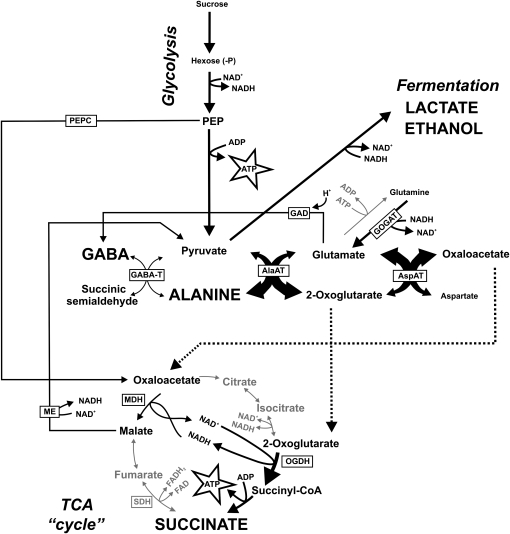Figure 9.
Metabolic model of primary metabolism under hypoxia in L. japonicus. When respiratory energy production is inhibited by decreased oxygen availability to a plant, drastic changes are observed in the steady-state levels of primary metabolites. Here, a model is described that agrees with the changes in metabolite levels and enzyme activities observed in L. japonicus during waterlogging. Pyruvate production is enhanced due to the activation of glycolysis (Pasteur effect). To keep glycolysis going, cytosolic NAD+ must be continuously regenerated from NADH via fermentation reactions that lead to the accumulation of lactate and ethanol. By producing pyruvate, ATP is formed. Accumulation of pyruvate should be prevented during hypoxia as this activates respiratory oxygen consumption (Zabalza et al., 2009). Via AlaAT, the amount of pyruvate can be reduced. Moreover, this reaction produces 2-oxoglutarate, which can be used by OGDH and succinate CoA ligase to produce another ATP. Succinate will accumulate as the TCA cycle will be further blocked due to the oxygen limitation at the reaction catalyzed by SDH. The mitochondrial NAD+ that is required to oxidize 2-oxoglutarate can be recycled via the enzyme MDH, which obtains its substrate either via phosphoenolpyruvate carboxylase (PEPC) or via AspAT. The latter enzyme is known to be activated upon anoxia and provides Glu as a substrate for AlaAT. All reactions leading to the production of pyruvate can be catalyzed by enzymes that are located within the mitochondrion. The model explains why Ala and succinate accumulate during anoxia in plants and provides a pathway that improves the ATP production during anoxia.

